|
During the Civil War our government built 68 forts around the Nation's Capital. These earth and log structures were designed to be temporary field fortifications and only resist the attack of ground forces such as infantry, cavalry, and artillery. Naval Defense Needed In 1862 the battle between the Monitor and Merrimac, at Hampton Roads, created panic in Washington. As the war progressed, many European countries seemed eager to join the fight on the side of the Confederacy. Fort Washington, on the Potomac River 16 miles below Washington was considered too far away to be adequately supported. Therefore the protection of the city from naval attack became a major concern and army engineers began building earthworks to resist naval bombardment. 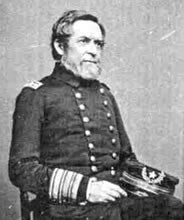
Building The FortIn the words of General Barnard they were "in many respects, model works. Fort Foote was constructed for the purpose of defending, in connection with Battery Rogers, the water approach to the city. It was situated six miles below Washington,on a commanding bluff of the Maryland shore, elevated 100 feet above the river. The fort was essentially completed in the fall of 1863, and was designed as a water battery of eight 200-pounder Parrott rifles and two 15-inch guns." Fort Foote was named in honor of Rear Admiral Andrew H. Foote who distinguished himself in the actions against the confederate forts on the Mississippi Rivers and died of wounds on June 26,1863.Since Fort Foote was a seacoast fortification, care was taken to insure that it could resist moisture and naval shells. General Barnyard described the work in his 1881 report: "The revetments of breast-height and slopes, and all the vertical walls of the interior structure, as magazines, bomb-proofs, galleries, &c., were made almost wholly of cedar posts, while the roofing of these structures were mainly of chestnut logs." The front of the fort was over 500 feet long and the earth walls were 20 feet thick. A central traverse ran the length of the fort and contained bombproof magazines and shortage areas. 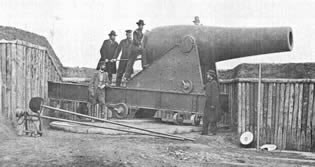
The CannonsThe first 15-inch gun arrived in the fall of 1863 and by April 1865 the fort boasted of two 15-inch Rodman Cannons, four 200 pounder Parrott Rifles and six 30 pounder Parrott Rifles. The work was declared complete on June 6, 1865. A large crowd of civilian and military observers gathered to watch the guns fire on February 27 and again on April 1, 1864. The 8-inch Parrott Rifles weighed over 8 tons and used 16 pounds of powder to fire its 200-pound projectile 2,000 yards down the river. But the fort's main attraction was the 15-inch Columbiads. They weighed in at 25 tons and required 300 to 400 soldiers to move them up the bluff from the river. Forty pounds of powder could send a 440-pound round-shot over 5,000 yards.During the Civil War the 15-inch guns cost the government $9,000 each but they could do major damage to a wood sailing ship-of-war. At close range, even the iron clads were not safe from the massive weapons. The two guns on display at Fort Foote were cast at Cyrus Alger Company in 1863 and 1864. 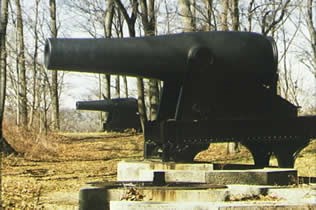
The GarrisonThe first unit to garrison Fort Foote was four companies of the 9th New York Heavy Artillery that arrived on August 12, 1863. The post was commanded by lieutenant Colonel William H. Seward, Jr., the son of the Secretary of State. The secretary visited the post often while his son was in command and President Lincoln visited the fort on August 20, 1863 with the Secretary of War and number of high-ranking army officers.Fort LifeLife at Fort Foote was similar to that experienced at other forts in the Washington defenses. The day began before sunrise and was filled with work and drill details until taps at 8:30 or 9:00 o'clock. Sunday's changes in routine meant morning inspections and church call followed by some leisure time in Afternoon.Although Fort Foote was within sight of the city lights it was considered an insolate post and the troops were a long way from the exciting nightlife across the Potomac River. Nearly all communication with Fort Foote was by the river wharf completed in 1864. The mail boat stopped at the fort three times a week and there were daily boats to Alexandria and Washington. Land routes were only used when the river iced over for Piscataway Road was over a mile from the fort. Unlike most seacoast fortifications, the garrison lived in frame buildings outside the fort but duty at Fort Foote was considered unhealthy. A large swamp plagued the post with malaria during the summer and the lack of pure water made typhoid a constant threat. As many as half the garrison would be on the sick list at any time and the 10 by 40-foot hospital came in handy during the wet season. 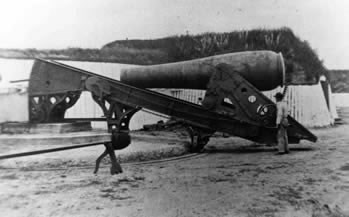
Fort Foote RetainedAfter the Civil War our government began dismantling the defenses of Washington and turned the property over to their landowners. Fort Foote was retained and new building constructed to accommodate the garrison. The fort was used as a military prison during 1868 and 1869. Major W. R. King set up a 15-inch gun and began experimenting with recoil carriage in 1869. During the first trial he fired 22 rounds from a 15-inch gun with charges ranging from 25 to 100 pounds. Because of the problems clearing the river before shooting and the limited range, he moved his experiment to Battery Hudson, New York in 1871.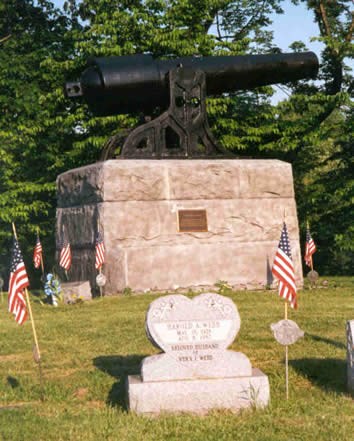
Fort ModifiedIn 1872 plans to strengthen the fort were submitted and the government finally purchased the property in 1873. Only a small amount of work was actually carried out under the new authorization and work stopped when funds were withdrawn in 1875. The garrison was removed in 1878 and Fort Foote became an abandoned military post.The post was used as a practice area for students from the engineer school from 1902 through 1917. Most of the guns were removed but one of Fort Foote's Parrott Rifles was sent to the Evergreen Cemetery in Leechburg, Pennsylvania. It now stands guard over the remains of 20 Civil War soldiers buried there. Two Rodman cannons were left at the post and are now on carriages overlooking the river. During World War I some gas service tests were carried out at the post and Fort Washington used the area for training Officer Candidates during World War II. After the war Fort Foote was transferred to the Department of Interior under the Capper-Crampton Act to become part of the "park and playground system for the Nation's Capital." |
Last updated: March 29, 2020
